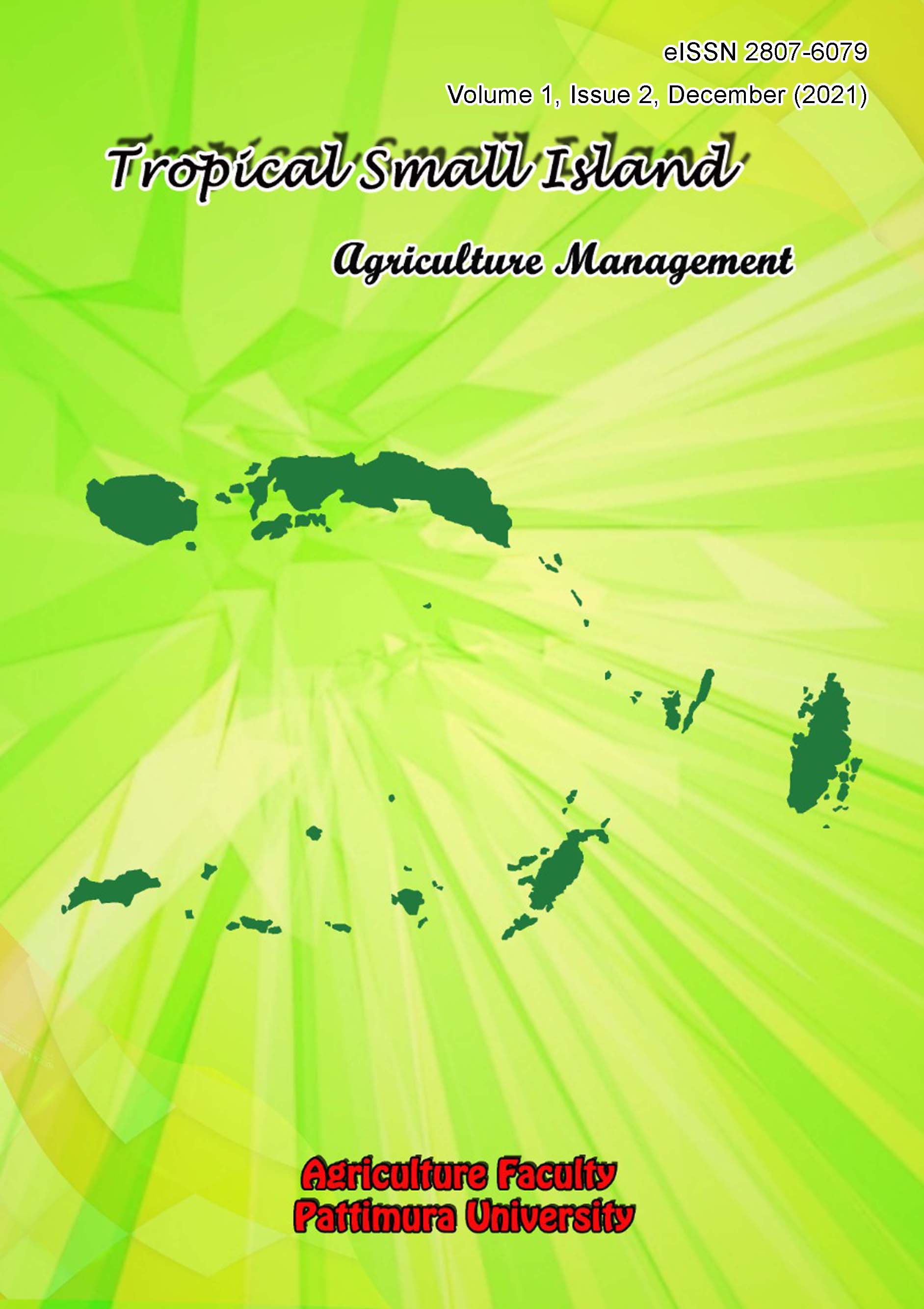Perceptions of Mahu Land Communities About Rice and Sague In East Saparua District, Central Maluku District
Abstract
Rice as a national food has contributed to all corners of the land in Maluku. Sago, which is usually present on the dining table, is now paired with rice. Research conducted in Mahu land’s Administrative, East Saparua District, Central Maluku Regency aims to determine the perceptions of people in Mahu land regarding rice and sago and how interested they are in eating sago in Mahu. The methods used are quantitative and qualitative with descriptive research characteristics. Primary data collection was carried out through observation, interviews, filling out questionnaires, FGD with stakeholders according to the research objectives. To determine strategic steps to increase interest in consuming sago, a SWOT analysis was used. The research results show that rice is an additional food, tends to be consumed by the younger generation, sago is still a staple food/main food.
Downloads
References
Kotler, P. & Armstrong, G. (2014). Principles of Marketing Edition. Pearson.
Marwa, J., Cabuy, R.L. & Tawer, A.Y. (2013). Potential and pattern of utilization of renewable energy sources from vegetation based on local knowledge of Ireres tribe in Tambrauw, West Papua, Indonesia. Indian Journal of Traditional Knowledge, 12 (3): 411-417.
Moelong, L.J. (2009). Qualitative Research Methods for Adolescents. Rosdakaria, Bandung.
Partini, Noer, M., Suliansyah, I., & Devianto, D. (2023). Review Literatur: Dinamika pengembangan perkebunan sagu berkelanjutan berbasis kearifan lokal. Jurnal Agribisains, 9(1), 28–37.
Putra, O.N., Musfiroh, I., Elisa, S., & Musa, M. (2024). Sodium Starch Glycolate (SSG) from Sago starch (Metroxylon sago) as a superdisintegrant: Synthesis and characterization. Molecules, 20(1).
Rangkuti, F. (2002) SWOT Analysis of Business Case Splitting Techniques. Gramedia Pustaka Utama, Jakarta.
Renu, M.A., Singh, K., Upadhyaya, S., & Dohare, R. (2017). Adsorption of heavy metal ions from wastewater using modified sago starch. Proceeding. Materials Today, 4 (10). https:/doi.org/10.1016/j.matpr.2017.09.042
Saifuddin, N., & Hussain, R. (2011). Microwave assisted bioethanol production from sago starch by co-culturing of ragi tapai and Saccharomyces cerevisiae. Journal of Mathematics and Statistics, 7(3), 198-206.
Sugiono (2020) Quantitative, Qualitative, R&D Research Methods. Alfa Betha.
Wang, L., & Tong, L. (2024). Production and properties of starch: Current Research. Molecules, 29(3). https://doi.org/10.3390/molecules29030646
Copyright (c) 2024 The Author(s)

This work is licensed under a Creative Commons Attribution-ShareAlike 4.0 International License.
Authors who publish with this journal agree to the following terms:
- Authors retain copyright and grant the journal right of first publication with the work simultaneously licensed under a Creative Commons Attribution License that allows others to share the work with an acknowledgment of the work's authorship and initial publication in this journal.
- Authors are able to enter into separate, additional contractual arrangements for the non-exclusive distribution of the journal's published version of the work (e.g., post it to an institutional repository or publish it in a book), with an acknowledgment of its initial publication in this journal.
- Authors are permitted and encouraged to post their work online (e.g., in institutional repositories or on their website) prior to and during the submission process, as it can lead to productive exchanges, as well as earlier and greater citation of published work (See The Effect of Open Access).









